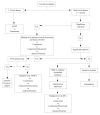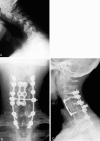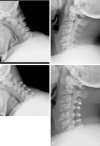Posterior surgery for cervical myelopathy: laminectomy, laminectomy with fusion, and laminoplasty
- PMID: 20404967
- PMCID: PMC2852088
- DOI: 10.4184/asj.2008.2.2.114
Posterior surgery for cervical myelopathy: laminectomy, laminectomy with fusion, and laminoplasty
Figures









References
-
- Geck MJ, Eismont FJ. Surgical options for the treatment of cervical spondylotic myelopathy. Orthop Clin North Am. 2002;33:329–348. - PubMed
-
- Hirabayashi K, Bohlman HH. Multilevel cervical spondylosis. Laminoplasty versus anterior decompression. Spine. 1995;20:1732–1734. - PubMed
-
- Mikawa Y, Shikata J, Yamamuro T. Spinal deformity and instability after multilevel cervical laminectomy. Spine. 1987;12:6–11. - PubMed
-
- Kato Y, Iwasaki M, Fuji T, Yonenobu K, Ochi T. Long-term follow-up results of laminectomy for cervical myelopathy caused by ossification of the posterior longitudinal ligament. J Neurosurg. 1998;89:217–223. - PubMed
-
- Matsunaga S, Sakou T, Nakanisi K. Analysis of the cervical spine alignment following laminoplasty and laminectomy. Spinal Cord. 1999;37:20–24. - PubMed
LinkOut - more resources
Full Text Sources

